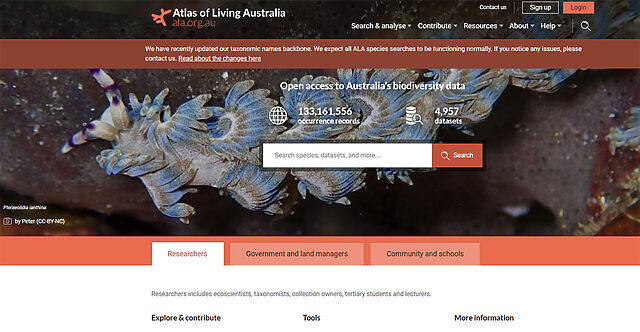
Benefits of an early warning system for exotic pests
With the explosion of citizen science platforms such as iNaturalist, which allow members of the public to upload occurrence records of species detected in Australia, an opportunity exists to use these platforms as an early warning system for the detection of exotic plant pests.
This is particularly important as the early detection of an exotic pest increases the chances of a successful eradiation response.
The Atlas of Living Australia (ALA) aggregates occurrence records of plants, animals, fungi, bacteria and viruses from over 900 data partners, including iNaturalist, and enables data access, storage, analysis and visualisation.
The Australian Chief Plant Protection Office and Australian Chief Environmental Biosecurity Office worked closely with the ALA to establish automatic alerts for suspect detections of key exotic pest species. Once a species that is on the department’s list of exotic pests enters the ALA, the system triggers a notification email to our offices. Information in the email includes the species name, the observer, the date, coordinates and a map showing the location of the detection, and a link to the record in the ALA.
Through the alert system, our department has been able to quickly respond to suspect detections of exotic pests by notifying the observation to the relevant jurisdiction for additional follow up (where the detection has no links to imported goods).
As occurrence records are not required to be verified by a qualified taxonomist before being ingested by the ALA, a risk exists whereby exotic pests may be recorded as detected in Australia. By verifying records and amending misidentifications, our department ensures that our trading partners do not implement any unnecessary market access restrictions.
Since the implementation of the alert system in late September 2021, there have been several occasions where jurisdictions have been requested to follow up on a suspect detection of an exotic pest and on each occasion, it was determined that the specimen had been misidentified and required no further action. One such example was a suspect detection of Halyomorpha halys (brown marmorated stink bug; BMSB) in November 2021. Upon receipt of the ALA alert, and following a review of the attached photos, departmental entomologists determined that this was a misidentification, and a request was made to the ALA to amend the record.
Following the success of the ALA alert system, multiple jurisdictions have now established their own alert system with the ALA, using their own set of priority species, to further ensure suspect exotic species are responded to in a timely manner.
Find out more about the ALA at https://www.ala.org.au/


